解説 / Description
バンブルビーオトシンクルスは、ペルーやコロンビアなどを原産とする、ロリカリア科の極めて小型のナマズです。蜂を思わせる黒と黄褐色の縞模様が最大の特徴で、その愛らしい姿から高い人気を誇ります。しかし、その見た目とは裏腹に、長期飼育が非常に困難な上級者向けの種として知られています。主な死因は、輸入過程でのストレスと飢餓による衰弱です。水槽内のバイオフィルム(微生物の膜)を主食とするため、十分に成熟した水槽環境と、その食性を理解した上での専門的な給餌管理が不可欠となります。「バンブルビーオトシン」という名前は、実は外見が酷似した複数の近縁種(主にRhinotocinclus属)の総称として使われており、分類学的な混乱が見られます。 The Bumblebee Otocinclus is an extremely small catfish from the Loricariidae family, native to countries like Peru and Colombia. Its most distinctive feature is its black and yellowish-brown striped pattern, reminiscent of a bumblebee, which makes it highly popular for its adorable appearance. However, contrary to its looks, it is known as a challenging species for advanced aquarists, being very difficult to keep long-term. The primary cause of death is emaciation due to stress and starvation during the import process. As its main diet consists of biofilm in the aquarium, a well-matured tank environment and specialized feeding management based on an understanding of its diet are essential. The name “Bumblebee Otocinclus” is actually a commercial umbrella term for several closely related species (mainly in the genus Rhinotocinclus) that are very similar in appearance, leading to some taxonomic confusion.
基本情報 / Basic Information
| 学名 / Scientific Name | Rhinotocinclus isabelae (日本市場での最有力候補), R. variola など |
|---|---|
| 通称 / Common Name | バンブルビーオトシンクルスBumblebee Otocinclus, Bumblebee Oto |
| 分類 / Family | ロリカリア科 (Loricariidae)Loricariidae |
| 英名 / English Name | Bumblebee Otocinclus |
| 分布 / Distribution | 南米(ペルー、コロンビア、ブラジルなど)South America (Peru, Colombia, Brazil, etc.) |
| 最大体長 / Max Size | 約2-3cmApprox. 2-3 cm |
| 寿命 / Lifespan | 2年以上2+ years |
飼育環境 / Aquarium Environment
| 水槽サイズ / Tank Size | 45cm規格水槽(約40L)以上を推奨。小型ですが、群れでの飼育と水質安定のため、ある程度の広さが望ましいです。新規の水槽ではなく、バイオフィルムが豊富な十分に成熟した水槽が必須です。A standard 45cm tank (approx. 40L) or larger is recommended. While small, a decent amount of space is desirable for keeping them in groups and for water stability. A well-matured tank rich in biofilm is essential, not a newly set up one. |
|---|---|
| 水温 / Temperature | 22℃〜27℃ |
| 水質 / Water Quality | 弱酸性〜中性 (pH 6.0-7.0)、軟水。原産地のブラックウォーターを意識した水質が理想です。Slightly acidic to neutral (pH 6.0-7.0), soft water. Water conditions mimicking their native blackwater habitats are ideal. |
| レイアウト / Layout | 流木、水草、落ち葉などを多めに配置し、餌場と隠れ家を兼ねた複雑な環境を作ります。底砂は口器を傷つけないよう、細かい砂が必須です。Arrange plenty of driftwood, aquatic plants, and leaf litter to create a complex environment that serves as both feeding grounds and hiding places. Fine sand is essential as a substrate to avoid injuring their delicate mouths. |
| 注意点 / Precautions | 【超上級者向け】飼育が極めて困難な種です。最大の死因は餓死であり、常に摂食できる環境が不可欠です。野生採集個体のため、導入初期は特にデリケートで、丁寧なリハビリテーションが必要です。[For Expert Aquarists Only] This is an extremely difficult species to keep. The primary cause of death is starvation, making a constant food source essential. As they are wild-caught, they are particularly delicate upon introduction and require careful rehabilitation. |
餌と給餌 / Feeding
| 餌の種類 / Diet | 水槽内のバイオフィルム(微生物の膜)や柔らかいコケが主食です。これが不足すると餓死するため、植物性のタブレットや茹でた野菜(ズッキーニなど)、ゲル状の餌(レパシーなど)を補助的に与える必要があります。Its main diet consists of biofilm and soft algae in the aquarium. If these are insufficient, it will starve. Therefore, supplementary feeding with vegetable-based tablets, blanched vegetables (like zucchini), and gel foods (like Repashy) is necessary. |
|---|---|
| 給餌のポイント / Feeding Tips | 水槽を「綺麗にしすぎない」ことが重要です。健康な個体は腹部が白く丸みを帯びています。痩せた個体は回復が困難なため、購入時に状態の良い個体を選ぶことが最も重要です。It is important not to “over-clean” the tank. Healthy individuals have a white, rounded belly. Emaciated individuals are difficult to recover, so selecting healthy specimens at the time of purchase is crucial. |
性格と混泳 / Temperament and Tank Mates
| 性格 / Temperament | 非常に温和で、他の魚を攻撃することはありません。臆病なため、5〜6匹以上の群れで飼育すると落ち着き、より自然な行動を見せます。Very peaceful and will not attack other fish. They are shy, so keeping them in a group of 5-6 or more will help them feel secure and exhibit more natural behavior. |
|---|---|
| 混泳の相性 / Compatibility | 小型テトラ、ボララス、ピグミーコリドラスなど、同じく小型で温和な魚が理想的です。ビーシュリンプのような小型エビとの相性も抜群です。餌の競合相手となる活発な底棲魚は避けるべきです。Ideal tank mates are other small, peaceful fish such as small tetras, Boraras, and pygmy corydoras. It is also an excellent companion for small shrimp like Bee Shrimp. Active bottom-dwelling fish that would compete for food should be avoided. |
病気と対策 / Diseases and Prevention
| かかりやすい病気 / Common Diseases | 最大の死因は餓死です。水質の悪化やストレスで細菌感染症にかかることがあります。ナマズの仲間は魚病薬、特に銅を含むものに弱いので注意が必要です。The primary cause of death is starvation. They can be susceptible to bacterial infections from poor water quality or stress. Catfish are sensitive to medications, especially those containing copper, so caution is required. |
|---|---|
| 対策と予防 / Prevention | 安定した水質と、絶え間ない食料供給が最良の予防策です。導入時の慎重な水合わせと、バイオフィルムが豊富な検疫水槽での初期管理が生存率を大きく左右します。Stable water quality and a constant food supply are the best preventive measures. Careful acclimation upon introduction and initial management in a quarantine tank rich with biofilm are critical for survival. |
増やし方(繁殖) / Breeding
| 繁殖形態 / Reproduction | 卵生。繁殖様式は不明な点が多いですが、近縁種から推測すると、水草の葉などに粘着卵を産み付けると考えられます。Egg-layer. The exact breeding method is largely unknown, but based on related species, it is presumed to lay adhesive eggs on plant leaves or other surfaces. |
|---|---|
| 繁殖のポイント / Breeding Tips | 飼育下での確実な繁殖例は報告されておらず、非常に困難です。成功させるには、原産地の水質(弱酸性の軟水)の再現や、雨季を模倣した水換えなどが引き金になる可能性があります。稚魚は極めて小さく、初期飼料の確保が最大の課題となります。There are no confirmed reports of breeding in captivity, and it is considered extremely difficult. Success would likely require replicating native water conditions (soft, acidic water) and potential triggers like simulated rainy seasons. The fry would be exceptionally small, making the provision of initial food the greatest challenge. |
特徴的な行動と豆知識 / Behavior and Fun Facts
| 特徴 / Characteristics |
【隠された正体】「バンブルビーオトシン」は、実は外見が酷似した複数の種(主にRhinotocinclus属)の総称です。日本で流通するのはペルー産のR. isabelaeという種が最有力とされています。 【脂ビレの有無】一般的なオトシンクルス属(*Otocinclus*)には背ビレと尾ビレの間に脂ビレがありませんが、本種が属する*Rhinotocinclus*属には小さな脂ビレがあります。これが両者を区別する簡単な方法です。 【挑戦者求む】その飼育の難しさから、長期飼育に成功することは、アクアリストの高度な技術と深い知識の証とされています。 【Hidden Identity】“Bumblebee Otocinclus” is actually a common name for several very similar species (mainly in the genus *Rhinotocinclus*). The one most commonly found in the Japanese market is believed to be *R. isabelae* from Peru. 【Adipose Fin】Unlike the common *Otocinclus* genus, which lacks an adipose fin between the dorsal and caudal fins, the *Rhinotocinclus* genus to which this species belongs has a small one. This is an easy way to distinguish between them. 【A Challenge for Experts】Due to its difficulty, successfully keeping this species long-term is considered a testament to an aquarist’s advanced skill and deep knowledge. |
|---|
まとめ / Conclusion
バンブルビーオトシンクルスは、その愛らしい姿でアクアリストを魅了しますが、その飼育は極めて困難な挑戦です。成功の鍵は、彼らの食性を支える「微細生態系の構築」にあります。 The Bumblebee Otocinclus captivates aquarists with its charming appearance, but keeping it is an extremely difficult challenge. The key to success lies in “building a micro-ecosystem” that supports its dietary needs.
単なる魚の飼育を超え、水槽という小宇宙の管理者としての役割を担う覚悟のある、真の熟練者にとってのみ、この小さな探求者はその真の輝きを見せてくれるでしょう。For the true expert who is prepared to take on the role of an ecosystem manager for this small universe in a tank, going beyond simple fishkeeping, this little explorer will reveal its true brilliance.
▶ 記事の生体をAMAZONで買う ▶ 記事の生体をYahooで買う

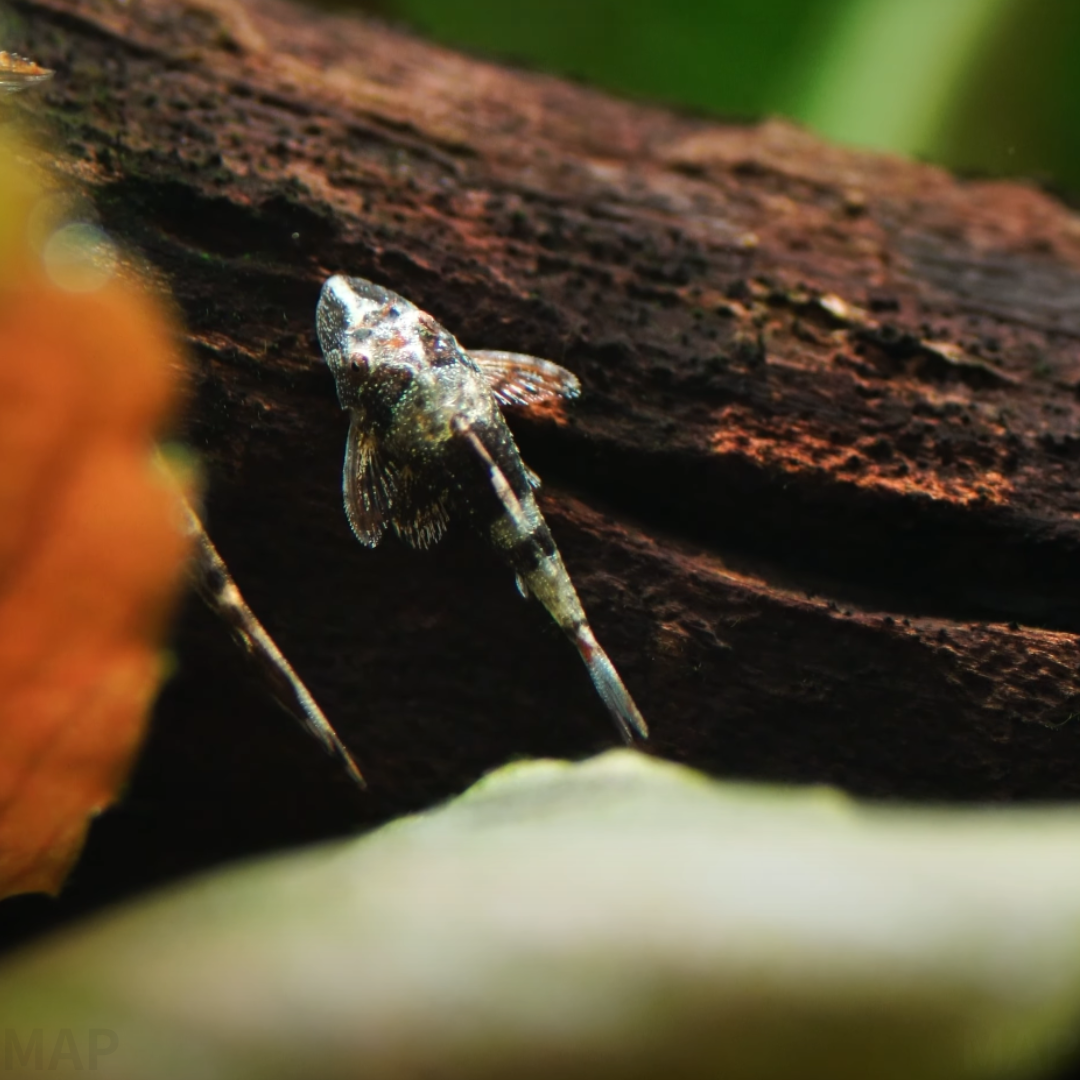





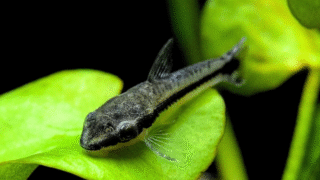
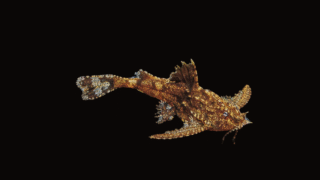
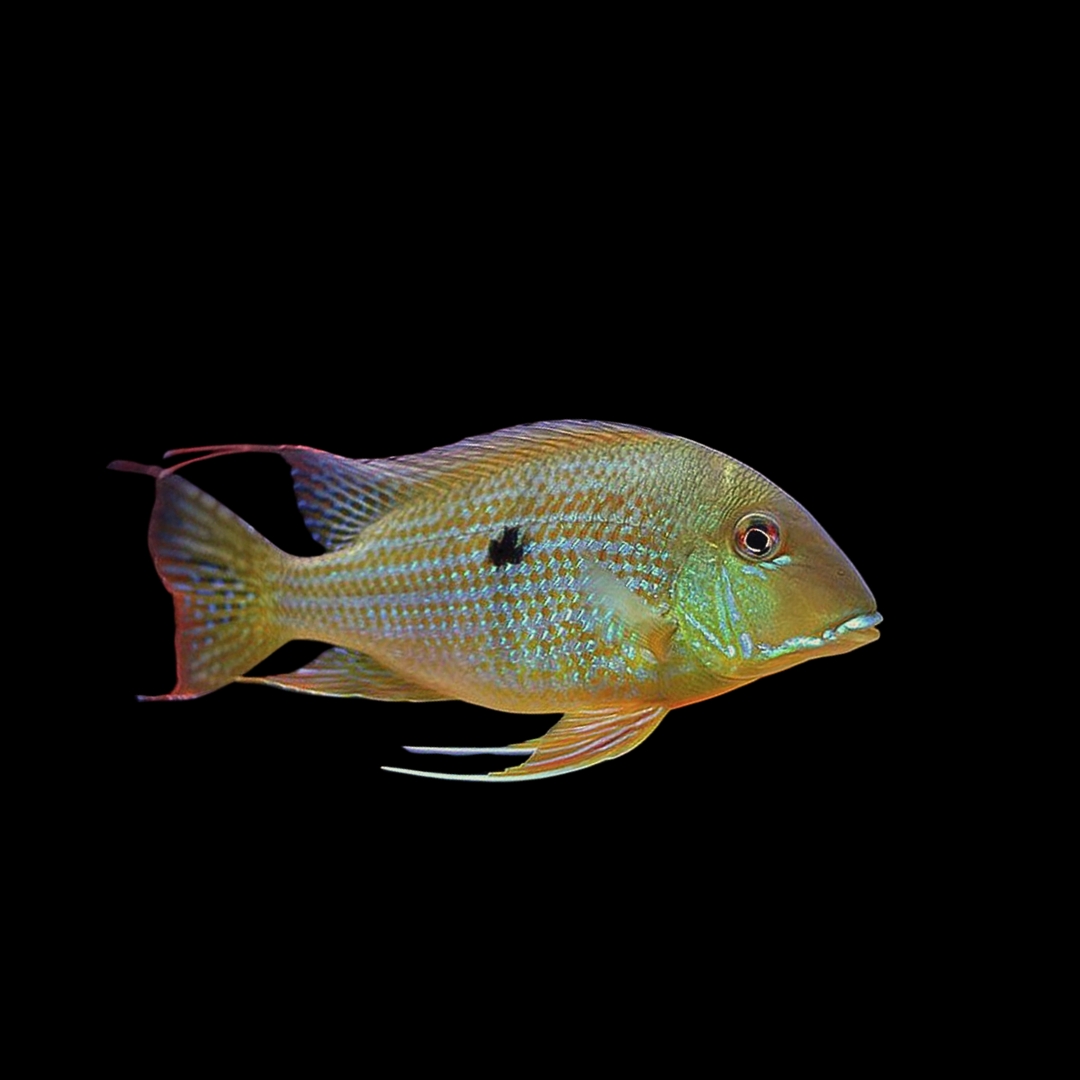
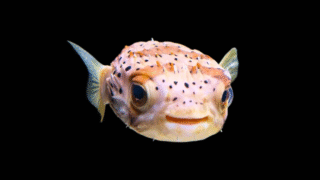
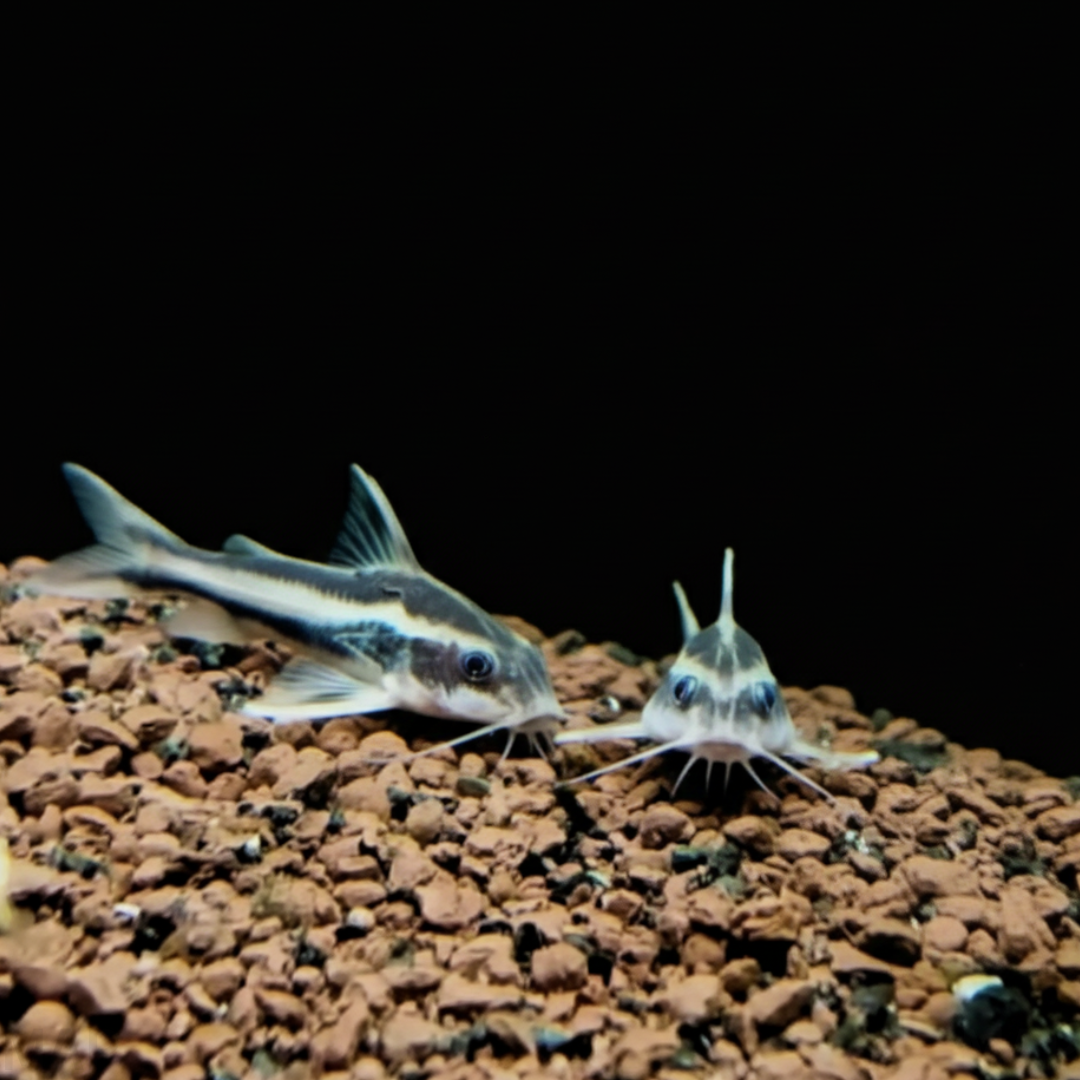
コメント